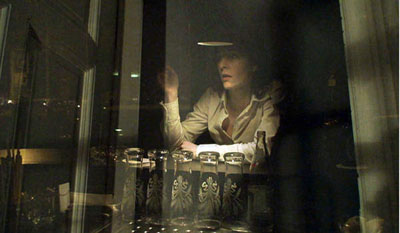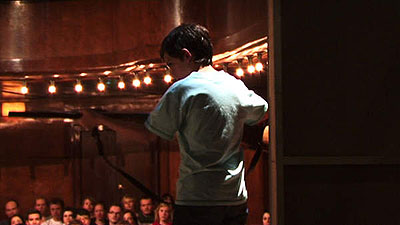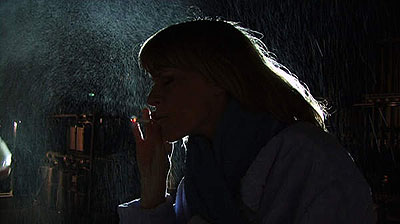
Les Ruissellements Du Diable
2008
Digital video, color, sound, 10 min.
Courtesy the artist and Pilar Corrias Gallery, London.
Keren Cytter »
Exhibition: 5 Jan – 4 Apr 2010

UCLA Hammer Museum
10899 Wilshire Blvd.
CA 90024-4201 Los Angeles
+1-323-4437000
hammerinfi@arts.ucla.edu
hammer.ucla.edu
Tue-Fri 11-19, Thu 11-21, Sun 11-17

Untitled
2009
Digital video, color, sound, 9 min.
Courtesy the artist and PIlar Corrias Gallery, London.
In the trailer for Michelangelo Antonioni's 1966 film Blow-Up, a male voice-over proclaims, "Sometimes reality is the strangest fantasy of all," expressing a sentiment often used to justify the transposition of real-life events into the realms of fictional literature and film. Antonioni was a member of the Italian neorealist movement and was also influenced by the French New Wave, so that by the time Blow-Up was released, an interest in bringing the realities of daily life into fiction was well established. But the film's mash-up between reality and fantasy differed greatly from the director's more socially conscious previous forays into neorealism. Set in 1960s London, Blow-Up portends to be a sexy but relatively straightforward thriller about a fashion photographer, Thomas Hennings, who inadvertently discovers a murder in the park. Despite its depiction of the glamour and newfound liberalism of this swinging era, at its heart, the film is about the ontology of photography and cinema and the evidentiary power of the image. The title itself refers to the technique of enlargement, a process that the protagonist uses to help clarify what the camera has captured but that is quickly revealed to also distort the image. In Israeli artist Keren Cytter's film Les ruissellements du diable (The Devil's Streams, 2008), references to Blow-Up are evident. Rather than taking Antonioni's film as direct inspiration, however, Cytter returns to the short story upon which it was based, Argentinean Julio Cortázar's “Las babas del diablo” (The Devil's Drool) of 1959, underscoring the interplay between the genres of fictive narrative and filmmaking and also distancing her project from the visual language of the now-iconic Blow-Up. Antonioni took many liberties with Cortázar's story, changing the story line, the location, and the main character's vocation, from translator and amateur photographer to professional fashion photographer. He also ignored some of the more experimental structural aspects of Cortázar's writing in favor of a linear narrative, even though he defied one convention of the mystery genre and left the murder unresolved.

Four Seasons
2009
Digital video, color, sound, 12 min.
Courtesy the artist and Pilar Corrias Gallery, London.

Untitled
2009
Digital video, color, sound, 9 min.
Courtesy the artist and PIlar Corrias Gallery, London.